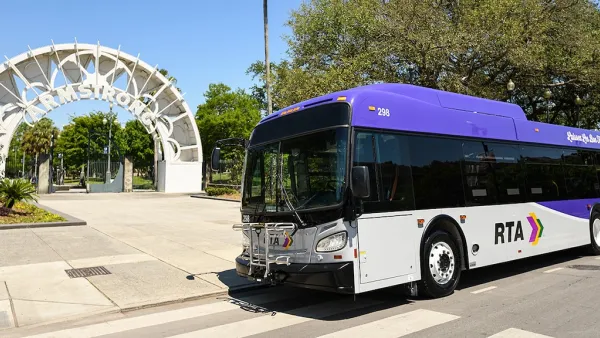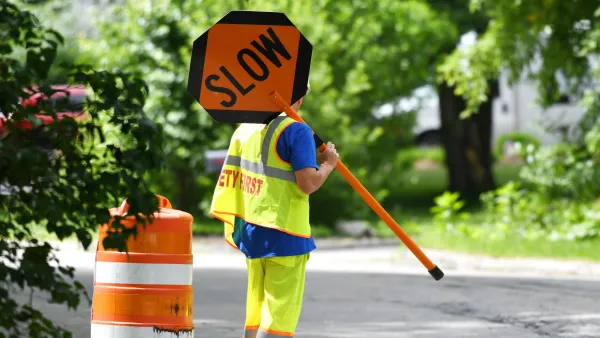Since the devastation of Hurricane Katrina, public transit in New Orleans has struggled to rebound. With few riders, service expansions can't be justified. But with diminished service, fewer view transit as a viable option.
"One of the difficult truths America learned when Katrina's floodwaters receded is that a sizable chunk of the city's population--one in four according to the 2000 census--lacks access to cars, filling the worn plastic seats of buses and streetcars instead. Even before post-Katrina revelations, however, it was no secret that the New Orleans Regional Transit Authority (RTA) lacked the resources to transport its riders reliably, many of whom worked in the hotels, restaurants, and hospitals at one end of the city's sprawling 350-square-mile footprint and lived at the other. Riders would be held captive in the thick hot heat of summers, waiting hours at a time for a single transfer. On rainy days, entrepreneurial peddlers worked the crowds of soggy commuters at the uncovered bus stops, selling umbrellas held together with electric tape.
The storm and the resulting exodus only exacerbated the RTA's woes. After flooding destroyed 200 buses and miles of streetcar track, the RTA had to deploy aging commuter castoffs from other cities. The city's historic, olive-green streetcars became no more than a symbol used by the city's tourist board. Riders who could afford to buy or borrow cars began to do so. Others took up biking or walking. Many did not return.
Three years after Katrina, the 124,000 daily riders who fed the system the coins it needs to keep running have dropped by 75 percent, to 31,000 daily riders. The RTA now finds itself caught in a chicken-or-egg conundrum, funded by a combination of farebox returns, local tax revenue, and federal grants tied to a large ridership. Until more people return home to New Orleans, the city can't improve the transit routes to get them there."
FULL STORY: Transportation’s Slow Ride to Recovery in NOLA

Analysis: Cybertruck Fatality Rate Far Exceeds That of Ford Pinto
The Tesla Cybertruck was recalled seven times last year.

National Parks Layoffs Will Cause Communities to Lose Billions
Thousands of essential park workers were laid off this week, just before the busy spring break season.

Retro-silient?: America’s First “Eco-burb,” The Woodlands Turns 50
A master-planned community north of Houston offers lessons on green infrastructure and resilient design, but falls short of its founder’s lofty affordability and walkability goals.

Test News Post 1
This is a summary

Analysis: Cybertruck Fatality Rate Far Exceeds That of Ford Pinto
The Tesla Cybertruck was recalled seven times last year.

Test News Headline 46
Test for the image on the front page.
Urban Design for Planners 1: Software Tools
This six-course series explores essential urban design concepts using open source software and equips planners with the tools they need to participate fully in the urban design process.
Planning for Universal Design
Learn the tools for implementing Universal Design in planning regulations.
EMC Planning Group, Inc.
Planetizen
Planetizen
Mpact (formerly Rail~Volution)
Great Falls Development Authority, Inc.
HUDs Office of Policy Development and Research
NYU Wagner Graduate School of Public Service




























